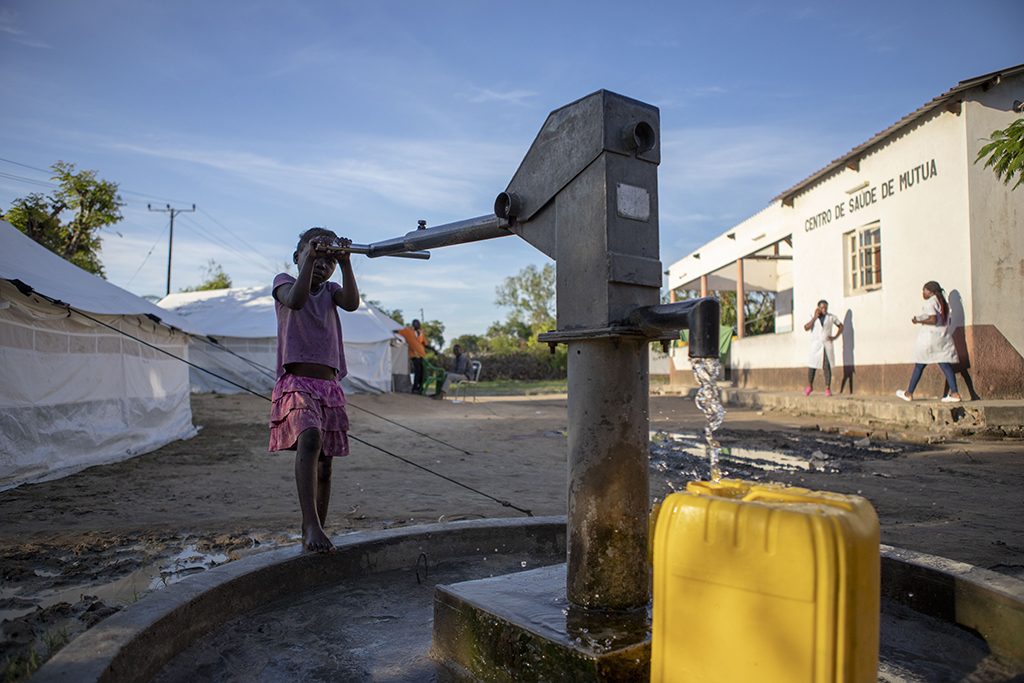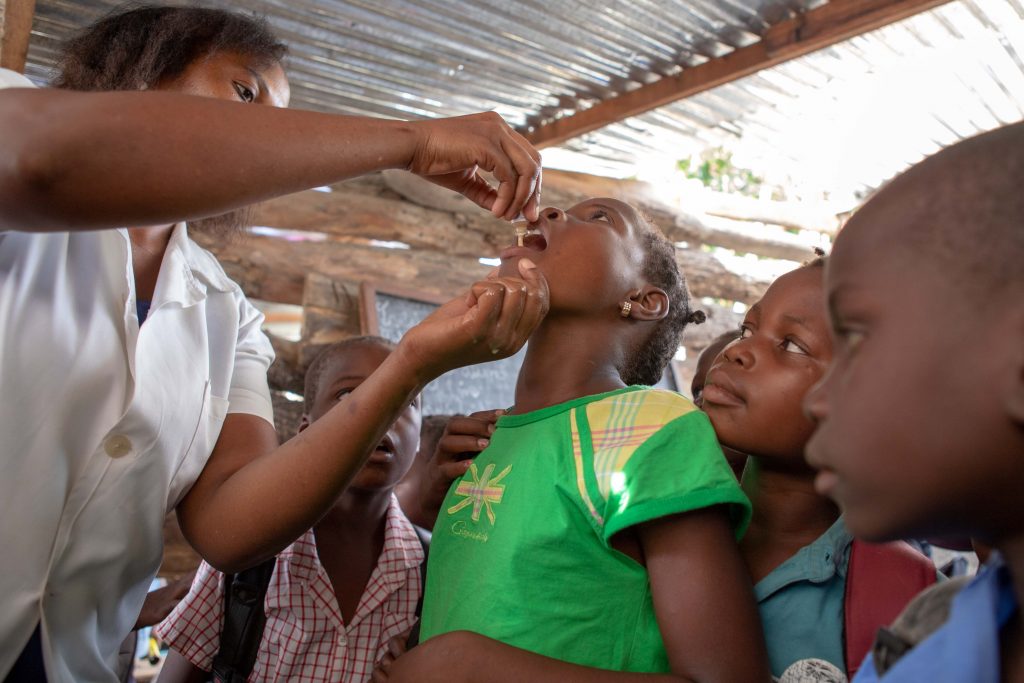Tropical Cyclone Idai: The Role of an Information Management Officer During a Level 3 Emergency
During an emergency, highly skilled Information Management Officers (IMOs) are called upon to help organizations improve the quality, timeliness, use, and sharing of critical humanitarian response data. With support from USAID OFDA, iMMAP consistently deploys IMOs to some of the most pressing humanitarian crises across the globe.
On March 19th, Tropical Cyclone Idai, one of the worst tropical cyclones to strike Africa and the Southern Hemisphere, came on top of weeks of heavy rains, causing destruction and damage in Inhambane, Manica, Sofala, Tete and Zambezia provinces of Mozambique. The impact of Cyclone Idai and subsequent flooding resulted in an estimated 1.85 million people in need of humanitarian assistance and protection.
On 22 March, the Inter-Agency Standing Committee (IASC) declared the humanitarian system-wide scale-up for a period of three months and activated nine Clusters. The World Health Organization (WHO) Mozambique was designated as the humanitarian Cluster Lead Agency (CLA) of the Health Cluster to provide support to the Ministry of Health (MoH) in Mozambique.
On 22 March, the Inter-Agency Standing Committee (IASC) declared the humanitarian system-wide scale-up for a period of three months and activated nine Clusters. The World Health Organization (WHO) Mozambique was designated as the humanitarian Cluster Lead Agency (CLA) of the Health Cluster to provide support to the Ministry of Health (MoH) in Mozambique.
Inter-Agency Standing Committee (IASC) scale-up activation is a system-wide mobilization in response to a sudden onset or rapidly deteriorating humanitarian situation in a given country, including at subnational level, where the capacity to lead, coordinate and deliver humanitarian assistance does not match the scale, complexity, and urgency of the crisis.
“The situation on the ground was extremely challenging for the affected population and the medical teams supporting them; health facilities had been cut-off by the cyclone and subsequent floods, hampering restocking of essential drugs and medical supplies in the health centers.” This is what iMMAP’s Naomi Morris, a senior IMO with multiple deployments in conflict and post-disaster emergencies, experienced when she arrived in Beira, Mozambique, the city which bore the brunt of Cyclone Idai’s force.
Deployed by iMMAP to support WHO´s relief operations, Naomi explains that, “in the beginning, the main identified health risks were cholera and other acute watery diarrhea, vector-borne diseases, including malaria, dengue, other epidemic-prone diseases such as measles, and malnutrition. In addition, the functionality of health facilities was limited in the affected area with major damage sustained to least 54 health centers.”
Deployed by iMMAP to support WHO´s relief operations, Naomi explains that, “in the beginning, the main identified health risks were cholera and other acute watery diarrhea, vector-borne diseases, including malaria, dengue, other epidemic-prone diseases such as measles, and malnutrition. In addition, the functionality of health facilities was limited in the affected area with major damage sustained to least 54 health centers.”
Collecting water in Dondo - Nieuwenhof (WHO Photo)
Naomi was working within the wider WHO team, in support of the Ministry of Health (MoH) and Health Cluster partners. “We completed assessments on Health Facilities, the availability of health staff and the additional human resources needed for information management and health operations. Assessment to ascertain the availability of essential drugs, vaccines and supplies were ongoing.”
Timely, accurate and detailed information for the response was, as always, a key factor alongside strong collaboration with all partners in support of the MoH to alleviate the suffering of the affected population after a natural disaster of this magnitude.
In the initial weeks of the response, WHO worked on the rollout of a field data collection package named ¨Early Warning, Alert and Response System (EWARS) in a box¨, that accelerated and streamlined the flow, analysis, and reporting of data needed to orient the response.
“Ongoing work was completed to assist in the coordination of partners in support of the MoH for 46 organizations who were providing direct health services or assistance to health facilities in affected areas,” says Naomi, who also supported health activity mapping to identify who was conducting what activities, where and when, which, compared against identified needs, helped the Health Cluster partners carry out a more efficient response by allocating resources fairly and thoroughly.
“Ongoing work was completed to assist in the coordination of partners in support of the MoH for 46 organizations who were providing direct health services or assistance to health facilities in affected areas,” says Naomi, who also supported health activity mapping to identify who was conducting what activities, where and when, which, compared against identified needs, helped the Health Cluster partners carry out a more efficient response by allocating resources fairly and thoroughly.
Health supplies assessment in 21 de Julho Accommodation Centre, Beira - Dalia Lourenço (WHO Photo)
Naomi reflects on the importance of Information Management services during an emergency to support the local actors: “timely, accurate and detailed information for the response was, as always, a key factor alongside strong collaboration with all partners in support of the MoH to alleviate the suffering of the affected population after a natural disaster of this magnitude.¨
Accurate data on which to base decisions can have a direct impact on the lives and livelihoods of beneficiaries; it will potentially affect the allocation and delivery of scarce financial and material resources, and it determines the development of a clear common operating picture to formulate effective response strategy and policy.
Accurate data on which to base decisions can have a direct impact on the lives and livelihoods of beneficiaries; it will potentially affect the allocation and delivery of scarce financial and material resources, and it determines the development of a clear common operating picture to formulate effective response strategy and policy.
Cholera vaccine for students in Dondo - Nieuwenhof (WHO Photo)
During an emergency, highly skilled Information Management Officers (IMOs) are called upon to help organizations improve the quality, timeliness, use, and sharing of critical humanitarian response data.
To address this need, iMMAP maintains a roster of rapidly deployable information management experts who provide surge capacity support in emergency operations through the Standby Partnership.
Naomi has been embedded within the Global Health Cluster in Geneva as an IMO focusing on the Public Health Information Services since January 2019. “Within my daily work in Geneva, I support colleagues at Country level with both capacity building missions and surge as required in the event of an emergency response,” explains Naomi. “In that capacity, I was deployed to Mozambique in response to Cyclone Idai, to provide our partners with professional information management services, facilitating informed decision-making to support the affected communities.”
To address this need, iMMAP maintains a roster of rapidly deployable information management experts who provide surge capacity support in emergency operations through the Standby Partnership.
Naomi has been embedded within the Global Health Cluster in Geneva as an IMO focusing on the Public Health Information Services since January 2019. “Within my daily work in Geneva, I support colleagues at Country level with both capacity building missions and surge as required in the event of an emergency response,” explains Naomi. “In that capacity, I was deployed to Mozambique in response to Cyclone Idai, to provide our partners with professional information management services, facilitating informed decision-making to support the affected communities.”
iMMAP´s Naomi Morris (left) during one of her previous emergency deployments





